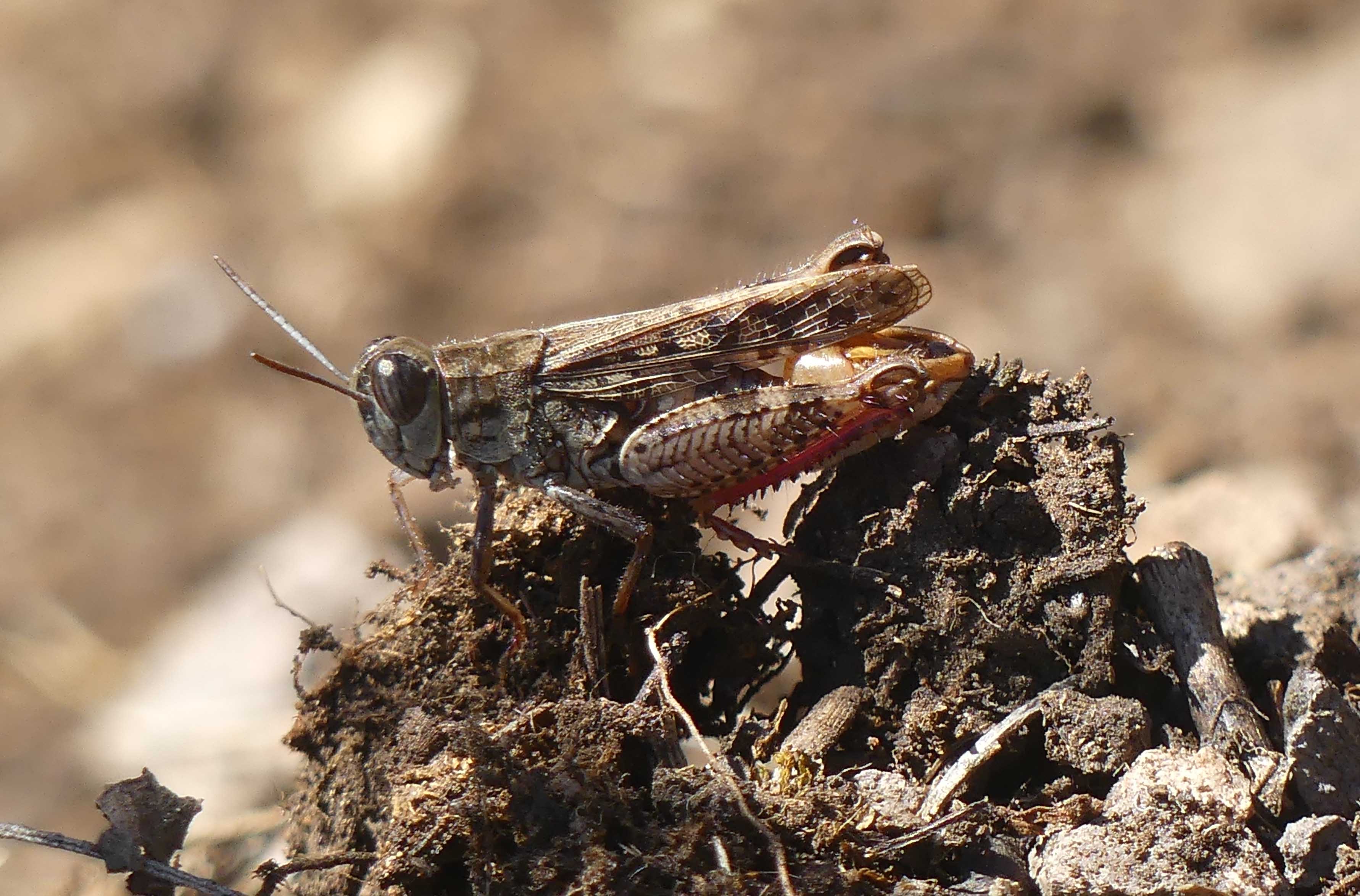Les criquets "à ailes rouges" (Insecta, Orthoptera, Acrididae) en Alsace : statut, répartition et écologie
 Résumé ̶ Parmi les orthoptères autochtones d’Alsace, quatre acridiens (criquets) possèdent des ailes colorées d’un rouge vif ou rosé avec ou sans bande noire à leurs extrémités. Il s’agit de Calliptamus italicus (Linnaeus, 1758), Calliptamus barbarus (O.G. Costa, 1836), Psophus stridulus (Linnaeus, 1758) et Oedipoda germanica (Latreille, 1804). Jusqu’au milieu des années 1900 et même au-delà, ces criquets dits "à ailes rouges" ont fait l’objet de nombreuses confusions d’identification. Cet article apporte des précisions sur les erreurs du passé et synthétise les connaissances actuelles sur ces quatre espèces. Toutes typiques des milieux xériques, à tendance géophile, elles connaissent un statut différent dans la région. Calliptamus barbarus, Psophus stridulus et Oedipoda germanica sont très rares et limités à seulement quelques sites des collines sous-vosgiennes et des Vosges méridionales. Ces espèces sont en très forte régression en lien avec la disparition des habitats favorables et des mesures conservatoires s’imposent pour la préservation de ces espèces. À l’inverse Calliptamus italicus, moins exigeant que les précédents, colonise une vaste gamme d’habitats naturels ou secondaires anthropiques. Typique de la plaine, des collines calcaires sous-vosgiennes et de quelques contreforts vosgiens, cette espèce semble s’établir depuis peu dans le massif vosgien.
Résumé ̶ Parmi les orthoptères autochtones d’Alsace, quatre acridiens (criquets) possèdent des ailes colorées d’un rouge vif ou rosé avec ou sans bande noire à leurs extrémités. Il s’agit de Calliptamus italicus (Linnaeus, 1758), Calliptamus barbarus (O.G. Costa, 1836), Psophus stridulus (Linnaeus, 1758) et Oedipoda germanica (Latreille, 1804). Jusqu’au milieu des années 1900 et même au-delà, ces criquets dits "à ailes rouges" ont fait l’objet de nombreuses confusions d’identification. Cet article apporte des précisions sur les erreurs du passé et synthétise les connaissances actuelles sur ces quatre espèces. Toutes typiques des milieux xériques, à tendance géophile, elles connaissent un statut différent dans la région. Calliptamus barbarus, Psophus stridulus et Oedipoda germanica sont très rares et limités à seulement quelques sites des collines sous-vosgiennes et des Vosges méridionales. Ces espèces sont en très forte régression en lien avec la disparition des habitats favorables et des mesures conservatoires s’imposent pour la préservation de ces espèces. À l’inverse Calliptamus italicus, moins exigeant que les précédents, colonise une vaste gamme d’habitats naturels ou secondaires anthropiques. Typique de la plaine, des collines calcaires sous-vosgiennes et de quelques contreforts vosgiens, cette espèce semble s’établir depuis peu dans le massif vosgien.
Mots-clés ̶ Calliptamus italicus, Calliptamus barbarus, Psophus stridulus, Oedipoda germanica, Vosges, Grand Est, France.
Abstract ̶ Red-winged grasshoppers (Insecta, Orthoptera, Acrididae) in Alsace: status, distribution and ecology
Amongst the native orthopterans of Alsace, four grasshoppers have bright red or pinkish coloured wings with or without a black band at their tips. These are Calliptamus italicus (Linnaeus, 1758), Calliptamus barbarus (O.G. Costa, 1836), Psophus stridulus (Linnaeus, 1758) and Oedipoda germanica (Latreille, 1804). Until the mid-1900s and beyond, these so-called "red-winged" grasshoppers were the subject of much confusion in identification. This article clarifies the errors of the past and summarises current knowledge of these four species. All of them are typical of xeric environments, with a geophilic tendency, and have a different status in the region. Calliptamus barbarus, Psophus stridulus and Oedipoda germanica are very rare and limited to only a few sites in the sub-Vosgesian hills and southern Vosges. These species are in serious decline due to the disappearance of favourable habitats. Conservation actions are needed for the species preservation. On the other hand, Calliptamus italicus, less demanding than the previous ones, colonises a wide range of natural or secondary anthropogenic habitats. Typical of the plains, the limestone hills under the Vosges and some Vosges foothills, this species seems to have recently become established in the Vosges Mountains.
Keywords ̶ Calliptamus italicus, Calliptamus barbarus, Psophus stridulus, Oedipoda germanica, Vosges, Grand Est region, France.
